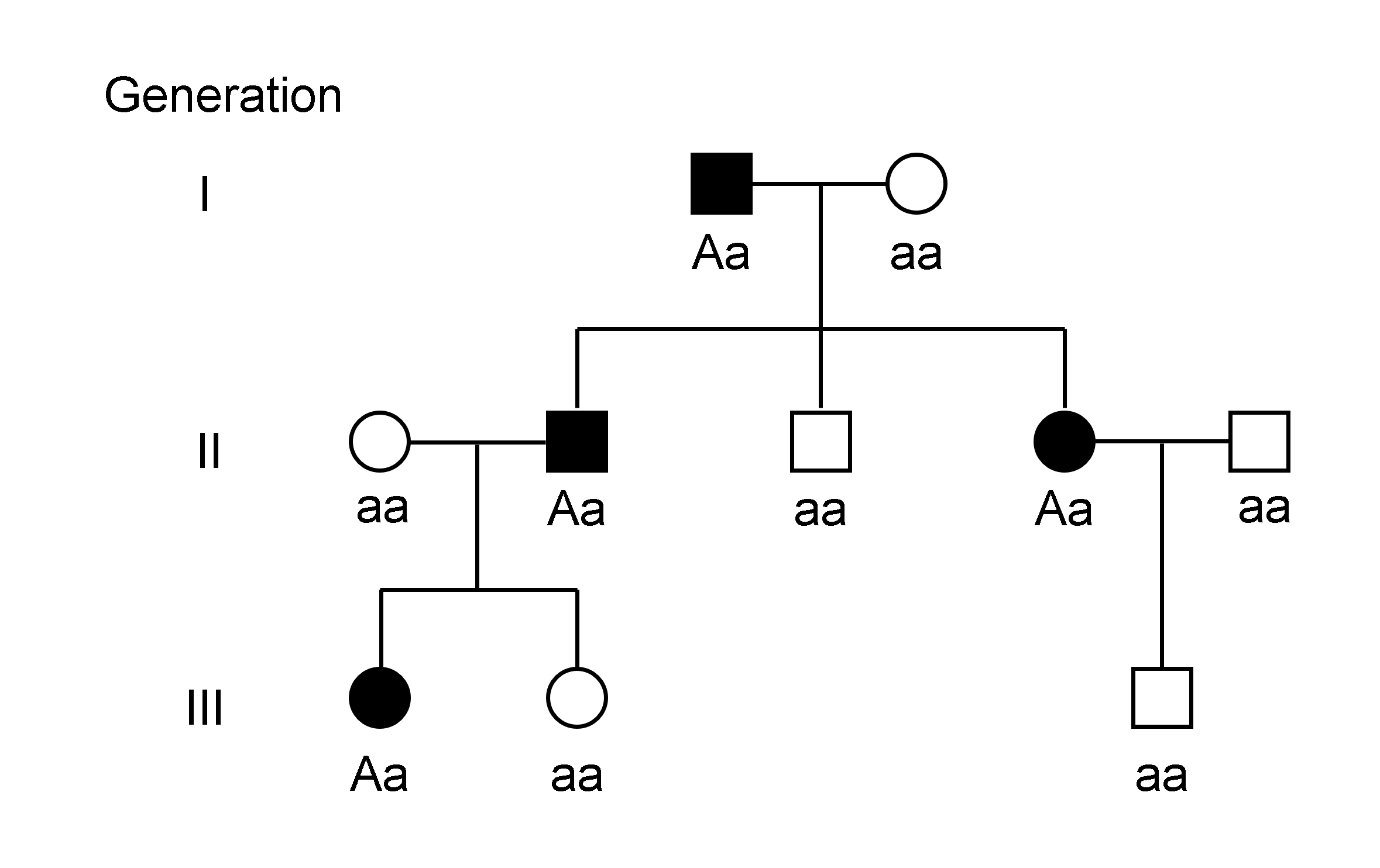|
Norms Of Reaction
In ecology and genetics, a reaction norm, also called a norm of reaction, describes the pattern of phenotype, phenotypic expression of a single genotype across a range of environments. One use of reaction norms is in describing how different species—especially related species—respond to varying environments. But differing genotypes within a single species may also show differing reaction norms relative to a particular phenotypic trait and environment variable. For ''every'' genotype, phenotypic trait, and environmental variable, a different reaction norm can exist; in other words, an enormous complexity can exist in the interrelationships between genetic and environmental factors in determining traits. The concept was introduced by Richard Woltereck in 1909. A monoclonal example Scientifically analyzing norms of reaction in natural populations can be very difficult, simply because natural populations of sexually reproductive organisms usually do not have cleanly separate ... [...More Info...] [...Related Items...] OR: [Wikipedia] [Google] [Baidu] |
Phenotype
In genetics, the phenotype () is the set of observable characteristics or traits of an organism. The term covers the organism's morphology (physical form and structure), its developmental processes, its biochemical and physiological properties, and its behavior. An organism's phenotype results from two basic factors: the expression of an organism's genetic code (its genotype) and the influence of environmental factors. Both factors may interact, further affecting the phenotype. When two or more clearly different phenotypes exist in the same population of a species, the species is called polymorphic. A well-documented example of polymorphism is Labrador Retriever coloring; while the coat color depends on many genes, it is clearly seen in the environment as yellow, black, and brown. Richard Dawkins in 1978 and again in his 1982 book '' The Extended Phenotype'' suggested that one can regard bird nests and other built structures such as caddisfly larva cases and beaver dams ... [...More Info...] [...Related Items...] OR: [Wikipedia] [Google] [Baidu] |
Genotype
The genotype of an organism is its complete set of genetic material. Genotype can also be used to refer to the alleles or variants an individual carries in a particular gene or genetic location. The number of alleles an individual can have in a specific gene depends on the number of copies of each chromosome found in that species, also referred to as ploidy. In diploid species like humans, two full sets of chromosomes are present, meaning each individual has two alleles for any given gene. If both alleles are the same, the genotype is referred to as Zygosity, homozygous. If the alleles are different, the genotype is referred to as heterozygous. Genotype contributes to phenotype, the observable traits and characteristics in an individual or organism. The degree to which genotype affects phenotype depends on the trait. For example, the petal color in a pea plant is exclusively determined by genotype. The petals can be purple or white depending on the alleles present in the pea plan ... [...More Info...] [...Related Items...] OR: [Wikipedia] [Google] [Baidu] |
Richard Woltereck
Richard Woltereck (6 April 1877 – 23 February 1944) was a German zoologist best known for developing the concept of reaction norm (German: ''Reaktionsnorm''). He also conducted some of the first research that provided evidence for the process of cytoplasmic inheritance. He proposed the concept in a 1909 paper that he presented to the German Zoological Society, based on his own research on the ''Daphnia'' water flea. According to historian Raphael Falk, the concept of the reaction norm was later revived by Richard Lewontin Richard Charles Lewontin (March 29, 1929 – July 4, 2021) was an American evolutionary biologist, mathematician, geneticist, and social commentator. A leader in developing the mathematical basis of population genetics and evolutionary theory, .... References Further reading * 1877 births 1944 deaths 20th-century German zoologists Scientists from Hanover University of Freiburg alumni Academic staff of Leipzig University {{Germany-biol ... [...More Info...] [...Related Items...] OR: [Wikipedia] [Google] [Baidu] |
Cloning
Cloning is the process of producing individual organisms with identical genomes, either by natural or artificial means. In nature, some organisms produce clones through asexual reproduction; this reproduction of an organism by itself without a mate is known as parthenogenesis. In the field of biotechnology, cloning is the process of creating cloned organisms of Cell (biology), cells and of DNA fragments. The artificial cloning of organisms, sometimes known as reproductive cloning, is often accomplished via somatic-cell nuclear transfer (SCNT), a cloning method in which a viable embryo is created from a somatic cell and an egg cell. In 1996, Dolly (sheep), Dolly the sheep achieved notoriety for being the first mammal cloned from a somatic cell. Another example of artificial cloning is molecular cloning, a technique in molecular biology in which a single living cell is used to clone a large population of cells that contain identical DNA molecules. In bioethics, there are a vari ... [...More Info...] [...Related Items...] OR: [Wikipedia] [Google] [Baidu] |
Allele
An allele is a variant of the sequence of nucleotides at a particular location, or Locus (genetics), locus, on a DNA molecule. Alleles can differ at a single position through Single-nucleotide polymorphism, single nucleotide polymorphisms (SNP), but they can also have insertions and deletions of up to several thousand base pairs. Most alleles observed result in little or no change in the function or amount of the gene product(s) they code or regulate for. However, sometimes different alleles can result in different observable phenotypic traits, such as different pigmentation. A notable example of this is Gregor Mendel's discovery that the white and purple flower colors in pea plants were the result of a single gene with two alleles. Nearly all multicellular organisms have two sets of chromosomes at some point in their biological life cycle; that is, they are diploid. For a given locus, if the two chromosomes contain the same allele, they, and the organism, are homozygous with re ... [...More Info...] [...Related Items...] OR: [Wikipedia] [Google] [Baidu] |
Gene
In biology, the word gene has two meanings. The Mendelian gene is a basic unit of heredity. The molecular gene is a sequence of nucleotides in DNA that is transcribed to produce a functional RNA. There are two types of molecular genes: protein-coding genes and non-coding genes. During gene expression (the synthesis of Gene product, RNA or protein from a gene), DNA is first transcription (biology), copied into RNA. RNA can be non-coding RNA, directly functional or be the intermediate protein biosynthesis, template for the synthesis of a protein. The transmission of genes to an organism's offspring, is the basis of the inheritance of phenotypic traits from one generation to the next. These genes make up different DNA sequences, together called a genotype, that is specific to every given individual, within the gene pool of the population (biology), population of a given species. The genotype, along with environmental and developmental factors, ultimately determines the phenotype ... [...More Info...] [...Related Items...] OR: [Wikipedia] [Google] [Baidu] |
Normal Distribution
In probability theory and statistics, a normal distribution or Gaussian distribution is a type of continuous probability distribution for a real-valued random variable. The general form of its probability density function is f(x) = \frac e^\,. The parameter is the mean or expectation of the distribution (and also its median and mode), while the parameter \sigma^2 is the variance. The standard deviation of the distribution is (sigma). A random variable with a Gaussian distribution is said to be normally distributed, and is called a normal deviate. Normal distributions are important in statistics and are often used in the natural and social sciences to represent real-valued random variables whose distributions are not known. Their importance is partly due to the central limit theorem. It states that, under some conditions, the average of many samples (observations) of a random variable with finite mean and variance is itself a random variable—whose distribution c ... [...More Info...] [...Related Items...] OR: [Wikipedia] [Google] [Baidu] |
Sexual Orientation
Sexual orientation is an enduring personal pattern of romantic attraction or sexual attraction (or a combination of these) to persons of the opposite sex or gender, the same sex or gender, or to both sexes or more than one gender. Patterns are generally categorized under heterosexuality, homosexuality, and bisexuality, while asexuality (experiencing no sexual attraction to others) is sometimes identified as the fourth category. These categories are aspects of the more nuanced nature of sexual identity and terminology. For example, people may use other labels, such as '' pansexual'' or '' polysexual'', or none at all. According to the American Psychological Association, sexual orientation "also refers to a person's sense of identity based on those attractions, related behaviors, and membership in a community of others who share those attractions". ''Androphilia'' and ''gynephilia'' are terms used in behavioral science to describe sexual orientation as an alternative to a ... [...More Info...] [...Related Items...] OR: [Wikipedia] [Google] [Baidu] |
Altruism
Altruism is the concern for the well-being of others, independently of personal benefit or reciprocity. The word ''altruism'' was popularised (and possibly coined) by the French philosopher Auguste Comte in French, as , for an antonym of egoism. He derived it from the Italian , which in turn was derived from Latin , meaning "alterity, other people" or "somebody else". Altruism may be considered a synonym of selflessness, the opposite of self-centeredness. Altruism is an important moral value in many cultures and religions. It can Moral circle expansion, expand beyond care for humans to include other Sentience, sentient beings and future generations. Altruism, as observed in populations of organisms, is when an individual performs an action at a cost to itself (in terms of e.g. pleasure and quality of life, time, probability of survival or reproduction) that benefits, directly or indirectly, another individual, without the expectation of reciprocity or compensation for that ac ... [...More Info...] [...Related Items...] OR: [Wikipedia] [Google] [Baidu] |
Schizophrenia
Schizophrenia () is a mental disorder characterized variously by hallucinations (typically, Auditory hallucination#Schizophrenia, hearing voices), delusions, thought disorder, disorganized thinking and behavior, and Reduced affect display, flat or inappropriate affect. Symptoms Prodrome, develop gradually and typically begin during young adulthood and rarely resolve. There is no objective diagnostic test; diagnosis is based on observed behavior, a psychiatric history that includes the person's reported experiences, and reports of others familiar with the person. For a diagnosis of schizophrenia, the described symptoms need to have been present for at least six months (according to the DSM-5) or one month (according to the ICD-11). Many people with schizophrenia have other mental disorders, especially mood disorder, mood, anxiety disorder, anxiety, and substance use disorders, substance use disorders, as well as obsessive–compulsive disorder (OCD). About 0.3% to 0.7% of peo ... [...More Info...] [...Related Items...] OR: [Wikipedia] [Google] [Baidu] |
Nature Versus Nurture
Nature versus nurture is a long-standing debate in biology and society about the relative influence on human beings of their genetics, genetic inheritance (nature) and the environmental conditions of their development (nurture). The alliterative expression "nature and nurture" in English has been in use since at least the Elizabethan era, Elizabethan period and goes back to medieval French. The complementary combination of the two concepts is an ancient concept (). Nature is what people think of as pre-wiring and is influenced by genetic inheritance and other biological factors. Nurture is generally taken as the influence of external factors after conception e.g. the product of exposure, experience and learning on an individual. The phrase in its modern sense was popularized by the Victorian era, Victorian polymath Francis Galton, the modern founder of eugenics and behavioral genetics when he was discussing the influence of heredity and Social environment, environment on social adv ... [...More Info...] [...Related Items...] OR: [Wikipedia] [Google] [Baidu] |





